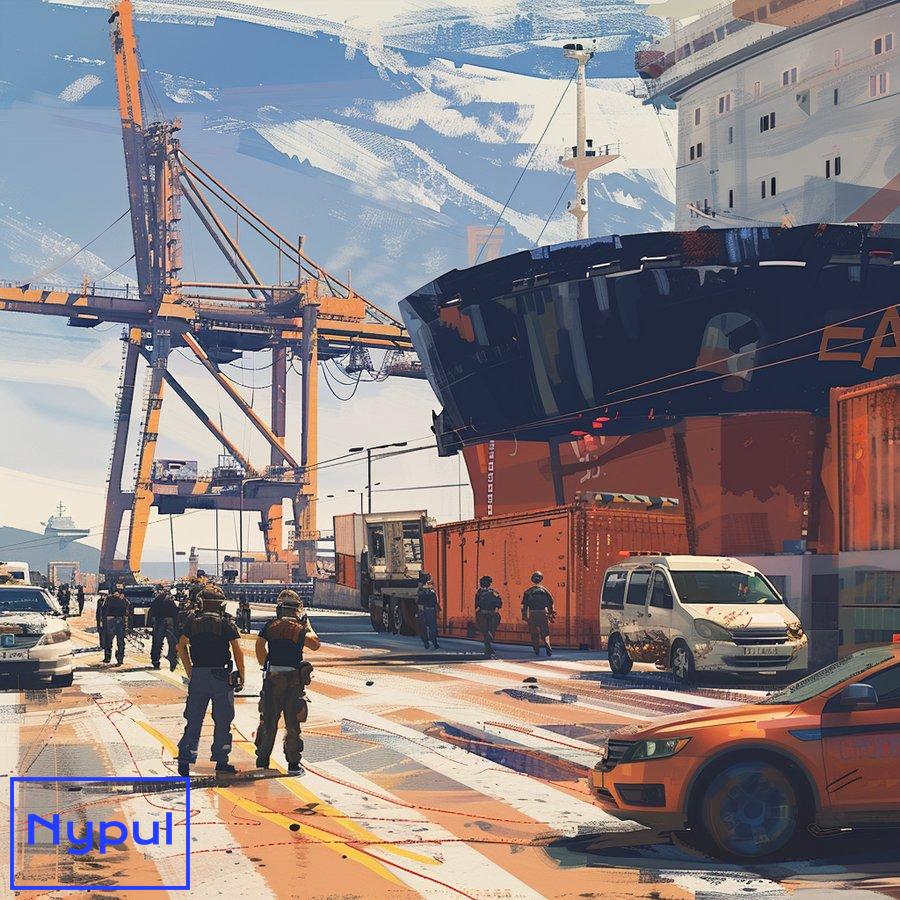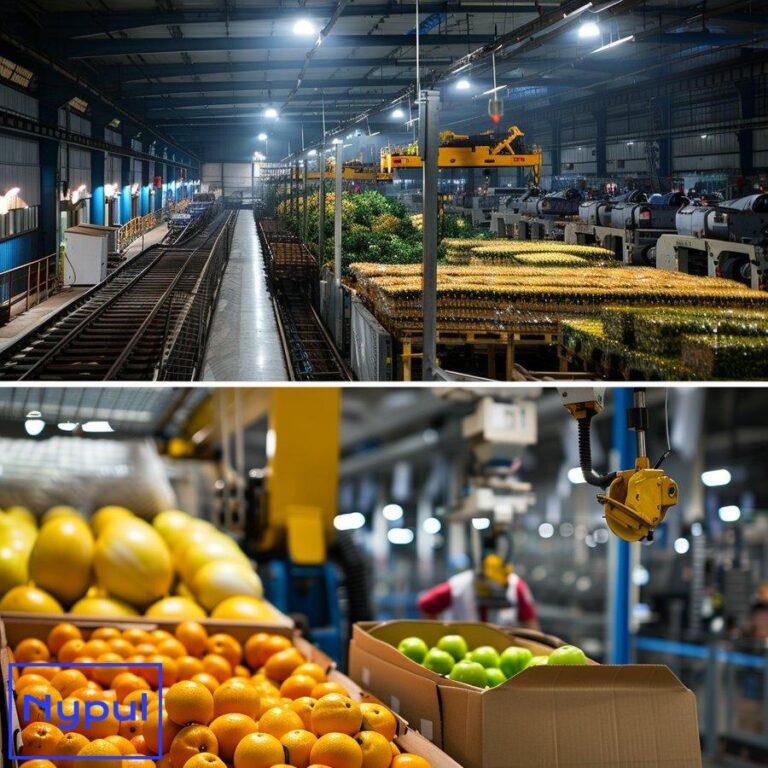How Many CBP Ports of Entry Are There
What are CBP ports of entry and why are they important?

Customs and Border Protection (CBP) ports of entry serve as the official gateways into the United States. These designated locations along the borders and coasts of the country play a crucial role in managing the flow of people, goods, and vehicles entering and exiting the nation. CBP ports of entry are staffed by trained officers who enforce immigration laws, collect duties, and ensure compliance with various regulations.
The importance of CBP ports of entry cannot be overstated. They act as the first line of defense against potential threats to national security, while simultaneously facilitating legitimate trade and travel. These ports are responsible for processing millions of travelers and billions of dollars worth of goods annually, making them vital to the U.S. economy and international relations.
Key Functions of CBP Ports of Entry
Border Security: CBP officers at ports of entry work tirelessly to prevent the entry of unauthorized individuals, contraband, and potentially harmful substances into the country. They employ various screening methods and technologies to detect and intercept threats.
Trade Facilitation: Ports of entry play a crucial role in facilitating international trade. They process imports and exports, ensuring that goods comply with U.S. laws and regulations. This function is essential for maintaining the flow of commerce and supporting the nation’s economic growth.
Revenue Collection: CBP ports of entry are responsible for collecting duties, taxes, and fees on imported goods. This revenue contributes significantly to the federal government’s budget and helps fund various programs and services.
Agricultural Protection: Officers at ports of entry inspect agricultural products to prevent the introduction of pests, diseases, and invasive species that could harm U.S. agriculture and natural resources.
Interdiction of Illegal Substances: CBP ports of entry play a crucial role in intercepting illegal drugs, weapons, and other prohibited items. This function is essential in combating transnational criminal organizations and protecting public health and safety.
Enforcement of Immigration Laws: At ports of entry, CBP officers verify the identity and eligibility of individuals seeking to enter the United States. They ensure that travelers have proper documentation and meet the requirements for admission.
The importance of CBP ports of entry extends beyond their immediate functions. They serve as critical nodes in the global supply chain, influencing international trade patterns and economic relationships. By maintaining efficient and secure operations, these ports contribute to the competitiveness of U.S. businesses in the global marketplace.
Furthermore, CBP ports of entry play a significant role in shaping public perception of the United States. For many international visitors, these ports represent their first point of contact with the country. The professionalism and efficiency of CBP officers can leave lasting impressions on travelers, potentially influencing tourism, business relationships, and diplomatic ties.
In summary, CBP ports of entry are indispensable components of the nation’s border management strategy. They balance the dual objectives of enhancing security and facilitating legitimate trade and travel. As the United States continues to navigate complex global challenges, the role of these ports in safeguarding national interests while promoting economic prosperity remains paramount.
How many CBP ports of entry currently exist in the United States?
The United States maintains an extensive network of Customs and Border Protection (CBP) ports of entry to manage the flow of people and goods across its borders. As of 2024, there are 328 official CBP ports of entry spread across the country’s land borders, seaports, and airports.

This number includes:
Land Border Crossings: There are 110 land border crossings along the northern and southern borders of the United States. These ports of entry handle vehicular and pedestrian traffic between the U.S. and its neighbors, Canada and Mexico.
Seaports: The United States has 128 seaports that serve as CBP ports of entry. These facilities process cargo ships, cruise vessels, and other maritime traffic entering U.S. waters.
Airports: There are 90 airports designated as CBP ports of entry. These include major international airports as well as smaller regional facilities that handle international flights.
It’s important to note that the number of CBP ports of entry can fluctuate slightly over time due to various factors such as changes in trade patterns, security considerations, and resource allocation. The CBP periodically reviews and adjusts its port of entry network to ensure optimal coverage and efficiency.
Distribution of CBP Ports of Entry
The distribution of CBP ports of entry across different regions of the United States reflects the diverse nature of the country’s borders and international connections. Here’s a breakdown of the port distribution:
| Region | Number of Ports |
|---|---|
| Northern Border | 85 |
| Southern Border | 48 |
| Coastal Areas | 143 |
| Interior | 52 |
This distribution highlights the extensive coverage of CBP ports of entry, ensuring that international travelers and goods can be processed efficiently regardless of their point of entry into the United States.
Significance of the Number of Ports
The substantial number of CBP ports of entry underscores the complexity and scale of the task faced by U.S. border authorities. Each of these 328 ports must be staffed, equipped, and maintained to ensure consistent enforcement of customs and immigration laws while facilitating legitimate trade and travel.
The wide distribution of ports also reflects the United States’ commitment to international engagement and trade. By maintaining numerous points of entry, the country can accommodate diverse trade routes and travel patterns, supporting its position as a global economic powerhouse.
However, the large number of ports also presents challenges in terms of resource allocation and standardization of procedures. CBP must ensure that all 328 ports maintain consistent levels of security and efficiency, which requires significant coordination and investment in training and technology.
Evolution of Port Numbers
The current number of CBP ports of entry is the result of decades of evolution in U.S. border management strategies. Historical factors, changing trade patterns, and advancements in transportation technology have all influenced the development of the port network.
For instance, the advent of air travel led to the designation of numerous airports as international ports of entry. Similarly, the growth of containerized shipping has shaped the development of seaport facilities capable of handling modern cargo vessels.
Looking ahead, the number and distribution of CBP ports of entry may continue to evolve. Factors such as changes in global trade patterns, advancements in border security technology, and shifts in transportation modes could influence future decisions about port designations and operations.
In conclusion, the 328 CBP ports of entry represent a comprehensive network designed to balance security needs with the facilitation of legitimate trade and travel. This extensive system reflects the United States’ commitment to maintaining secure borders while remaining open to international commerce and cultural exchange.
Where are CBP ports of entry located across the country?
CBP ports of entry are strategically located across the United States to effectively manage the flow of people and goods entering and exiting the country. These ports are distributed along land borders, coastal areas, and at major international airports, forming a comprehensive network that covers all potential points of entry into the United States.
Land Border Ports
The United States shares land borders with Canada to the north and Mexico to the south. CBP ports of entry are positioned along these borders to process vehicular and pedestrian traffic.
Northern Border: Along the 5,525-mile border with Canada, there are numerous CBP ports of entry. Major crossings include:
- Detroit-Windsor Crossing (Michigan)
- Buffalo-Niagara Falls (New York)
- Blaine (Washington)
- Champlain-Rouses Point (New York)
- International Falls (Minnesota)
Southern Border: The 1,954-mile border with Mexico is dotted with busy ports of entry, including:
- San Ysidro (California)
- El Paso (Texas)
- Laredo (Texas)
- Nogales (Arizona)
- Brownsville (Texas)
Seaports
Coastal CBP ports of entry handle maritime traffic, including cargo ships, cruise vessels, and private boats. Some of the busiest seaports include:
East Coast:
– Port of New York and New Jersey
– Port of Savannah (Georgia)
– Port of Miami (Florida)
West Coast:
– Port of Los Angeles (California)
– Port of Long Beach (California)
– Port of Seattle (Washington)
Gulf Coast:
– Port of Houston (Texas)
– Port of New Orleans (Louisiana)
Airports
Major international airports across the country serve as CBP ports of entry for air travelers. Some of the busiest include:
- John F. Kennedy International Airport (New York)
- Los Angeles International Airport (California)
- Chicago O’Hare International Airport (Illinois)
- Miami International Airport (Florida)
- San Francisco International Airport (California)
- Dallas/Fort Worth International Airport (Texas)
Interior Ports
In addition to border, coastal, and airport locations, there are also CBP ports of entry located in the interior of the country. These inland ports typically process international cargo that has been transported by rail or truck from coastal entry points. Examples include:
- Chicago (Illinois)
- Dallas (Texas)
- Atlanta (Georgia)
- St. Louis (Missouri)
Regional Distribution of CBP Ports of Entry
To provide a clearer picture of how CBP ports of entry are distributed across the country, here’s a breakdown by region:
| Region | Notable Ports of Entry |
|---|---|
| Northeast | Boston Logan International Airport (MA), Port of New York and New Jersey, Buffalo-Niagara Falls (NY) |
| Southeast | Port of Miami (FL), Hartsfield-Jackson Atlanta International Airport (GA), Port of Savannah (GA) |
| Midwest | Detroit-Windsor Crossing (MI), Chicago O’Hare International Airport (IL), International Falls (MN) |
| Southwest | San Ysidro (CA), El Paso (TX), Phoenix Sky Harbor International Airport (AZ) |
| West | Los Angeles International Airport (CA), Port of Seattle (WA), San Francisco International Airport (CA) |
| Alaska | Anchorage International Airport, Alcan Border Crossing |
| Hawaii | Honolulu International Airport, Port of Honolulu |
| U.S. Territories | San Juan International Airport (Puerto Rico), Guam International Airport |
This distribution ensures that CBP has a presence at all major points of entry into the United States, allowing for comprehensive border management and security.
Factors Influencing Port Locations
The locations of CBP ports of entry are determined by various factors:
Geographic Necessity: Ports are naturally located at physical border crossings, major harbors, and international airports.
Trade Volumes: Areas with high volumes of international trade often have larger and more numerous ports of entry to handle the flow of goods.
Population Centers: Major cities near borders or with significant international connections typically have CBP ports of entry to serve local populations and businesses.
Strategic Importance: Some ports are located in areas of particular strategic or security importance, regardless of trade volumes.
Historical Factors: Many port locations have been established for decades or even centuries, reflecting long-standing trade routes and border communities.
The strategic placement of CBP ports of entry across the country ensures that the agency can effectively manage the entry and exit of people and goods while minimizing disruptions to legitimate trade and travel. This network of ports forms a critical part of the nation’s border security infrastructure, playing a vital role in protecting national interests while facilitating international commerce and cultural exchange.
What types of CBP ports of entry are there?
CBP ports of entry come in various types, each designed to handle specific modes of transportation and types of traffic. Understanding these different categories is crucial for anyone involved in international trade, travel, or border management. The main types of CBP ports of entry are:

Land Border Crossings
Land border crossings are ports of entry located along the United States’ borders with Canada and Mexico. These ports handle vehicular and pedestrian traffic crossing the border by land.
Subtypes of Land Border Crossings:
Vehicle Crossings: These are the most common type of land border ports, designed to process passenger vehicles and commercial trucks. Examples include the Ambassador Bridge between Detroit and Windsor, and the San Ysidro crossing between San Diego and Tijuana.
Pedestrian Crossings: Some land ports have dedicated facilities for individuals crossing the border on foot. These are often found in urban areas with high volumes of daily cross-border traffic.
Rail Crossings: Specialized ports handle international rail traffic, processing freight and passenger trains. An example is the International Railroad Bridge between Laredo, Texas, and Nuevo Laredo, Mexico.
Seaports
Seaports are CBP ports of entry located at coastal harbors and handle maritime traffic. They process a wide range of vessels and cargo types.
Subtypes of Seaports:
Container Ports: These large-scale facilities are equipped to handle containerized cargo. Examples include the Port of Los Angeles and the Port of New York and New Jersey.
Bulk Cargo Ports: Specialized ports handle non-containerized bulk cargo such as grain, coal, or oil. The Port of South Louisiana is a major bulk cargo port.
Cruise Terminals: Ports with facilities designed to process cruise ships and their passengers. Port Miami and Port Everglades in Florida are major cruise terminals.
General Cargo Ports: These versatile ports can handle various types of cargo, including break-bulk and project cargo.
Airports
Airport ports of entry process international air travelers and air cargo. They range from major international hubs to smaller regional airports with limited international service.
Subtypes of Airport Ports:
Major International Hubs: Large airports with extensive international connections, such as John F. Kennedy International Airport in New York or Los Angeles International Airport.
Regional International Airports: Smaller airports that handle some international traffic, often to nearby countries. Examples include Buffalo Niagara International Airport or San Diego International Airport.
Preclearance Airports: These are airports located in foreign countries where U.S. CBP officers are stationed to process travelers before they board U.S.-bound flights. Examples include airports in Canada, Ireland, and the Caribbean.
Interior Ports
Interior ports of entry are located away from physical borders and typically handle cargo that has been transported inland under bond from other ports of entry.
Subtypes of Interior Ports:
Inland Ports: These facilities process international cargo that has been transported by truck or rail from seaports or land border crossings. The inland port of Chicago is a prime example.
User Fee Airports: Smaller airports that have been designated as international ports of entry but where the services of CBP officers are provided on a fee basis. These are often used by private aircraft or charter flights.
Specialized Ports
Some CBP ports of entry are designed to handle specific types of traffic or serve particular functions.
Subtypes of Specialized Ports:
Express Consignment Facilities: These ports are dedicated to processing international express courier shipments. Major courier companies often have their own facilities at these ports.
Foreign Trade Zones: While not ports of entry themselves, these special economic zones operate under CBP supervision and are closely tied to the port of entry system.
Mail Facilities: International mail processing centers that serve as ports of entry for postal items entering the United States.
To illustrate the diversity of CBP ports of entry, here’s a comparison of some major ports across different categories:
| Port Type | Example | Primary Function | Annual Traffic (Approx.) |
|---|---|---|---|
| Land Border | San Ysidro, CA | Vehicle/Pedestrian | 70 million crossings |
| Seaport | Port of Los Angeles | Container Cargo | 9.2 million TEUs |
| Airport | JFK International | Air Passengers/Cargo | 62 million passengers |
| Interior Port | Chicago, IL | Inland Cargo Processing | $100 billion in trade |
| Specialized | UPS Worldport, Louisville | Express Consignments | 2 million packages daily |
The diverse types of CBP ports of entry reflect the complex nature of international trade and travel. Each type of port is equipped with specialized facilities, technologies, and personnel to efficiently process its specific type of traffic while maintaining high standards of security and compliance.
Understanding these different types of ports is crucial for businesses engaged in international trade, as the choice of port can significantly impact shipping times, costs, and regulatory requirements. For travelers, knowing the type of port they will be using can help in preparing the necessary documentation and understanding what to expect during the entry process.
CBP continually adapts its port network to meet changing needs, sometimes upgrading facilities to handle new types of traffic or designating new ports to serve emerging trade routes. This flexibility ensures that the U.S. port of entry system remains responsive to global economic trends and security challenges.
How do CBP ports of entry function to ensure security and facilitate trade?
CBP ports of entry operate as multifaceted facilities that balance the dual objectives of ensuring national security and facilitating legitimate trade and travel. The functioning of these ports involves a complex interplay of personnel, technology, and procedures designed to process high volumes of traffic efficiently while maintaining rigorous security standards.
Security Functions

The primary security functions of CBP ports of entry include:
Traveler Screening: CBP officers verify the identity and eligibility of individuals seeking to enter the United States. This process involves:
- Document verification
- Biometric checks
- Interviews to determine the purpose and duration of stay
- Cross-referencing against law enforcement databases
Cargo Inspection: Goods entering the country are subject to various levels of inspection to prevent the entry of contraband, prohibited items, or goods that violate U.S. laws and regulations.




